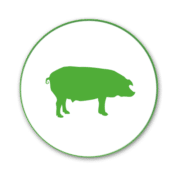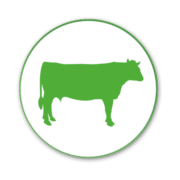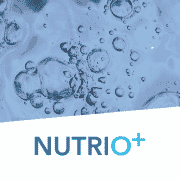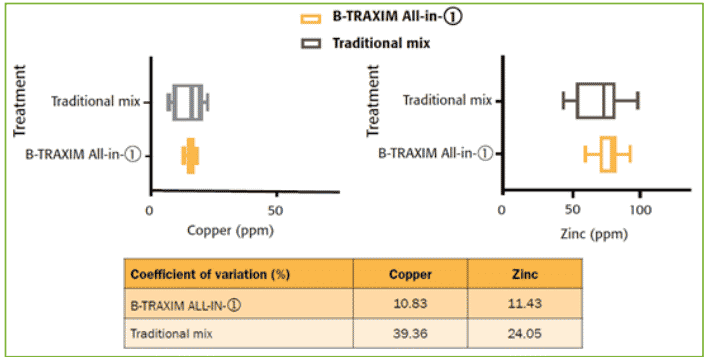Piglet performance through sow investment
Should good piglet management start at birth? Or is it wiser to prepare for well-performing litters one step earlier? When using certain feed additives in sow nutrition, the latter appears to hold true. There is value to be reaped later on at various stages of the offspring’s life.
Eunice Lee, Asian Pork Magazine
In intensive pork production, a high proportion of pig losses can occur in farrowing and lactation periods. It is a critical period to determine the overall performance of a production pig.
During these critical periods, not only the welfare of the sows should be addressed, but also the nutrients and elements that prepare the sows for body maintenance and the ability to encounter all types of disorders that may occur.
Some nutritionists address that stage as a transition period. Within the transition period, the metabolism of sows’ switches from anabolism to catabolism. During the gestation period, the energy ingested by sows is primarily for body maintenance and partially for foetal production, while during the lactation period, the majority of the energy intake is used for milk production. The requirements of energy, protein and fiber levels, and micronutrients in between the gestation diet and lactation diet have enormous quantitative and qualitative differences. In practice, these can be easily underestimated and overlooked.
The nutritional knowledge and supportive elements for this crucial transition period have started to receive further attention. Feed additives that are designed to support sows physiologically and systemically are also generally accepted and applied during the transition period.
Feed additive: lauric acid and monolaurin
Saturated fatty acids, more commonly known as organic acids, especially short chain fatty acids, are widely applied in piglet diets to support nutrient digestion. Another group of these organic acids are the medium chain fatty acids (MCFAs).
MCFAs are saturated carboxylic acids with a carbon chain length from C6 to C12. They are abundant in coconut oil or palm kernel oil in the form of triglycerides. The antimicrobial activity of MCFAs has been extensively studied. It has been shown that the antimicrobial effect of lauric acid
is quite potent among MCFAs. Its derivative, glycerol monolaurate (GML), which is produced by the esterification of a molecule of glycerol and a molecule of lauric acid, also has strong antimicrobial effect.
The antimicrobial mode of action for lauric acid and GML is mainly through disrupting the homeostasis of the bacterial cell membrane and inducing inhibition of the bacterial growth.
A synergistic effect between lauric acid and GML had been found against Streptococcus pyogenes at different mixture ratios, where the combination exhibits stronger inhibition activities than using the single ingredients. Both lauric acid and GML have been proven to have antiviral properties against different enveloped viruses.
Metabolism and immune modulation
From the mechanism of fat metabolism, MCFAs are shorter chains of carboxylic fatty acids than long chain fatty acids, and they can bypass the micelle formation process and be absorbed directly by the enterocytes and utilized as energy or transferred through portal vein to the liver. MCFAs require no binding protein while entering mitochondrial membrane and more readily undergo oxidation within the mitochondria.
MCFAs have been found to interact with immune or nonimmune cells via G protein coupled receptors (GPCR).
It has been shown that GPR40 is activated by MCFAs, with which lauric acid has a high affinity. GPR40 is highly expressed in monocytes, where it suggests that MCFAs have immune modulation effect. It has also been shown that MCFAs reduce viral replication by acting on MARC- 145 cells where it prevented the attachment of Porcine Respiratory and Reproductive Syndrome virus (PRRSv) or membrane fusion in the cytoplasm. Supplying triglycerides of MCFAs to rats conferred a protective effect on the intestine by increasing the IgA secretion and modulating the inflammatory immune response while challenged with endotoxin.
Field trial result
A field trial was conducted in a commercial sow farm in Germany, with 33 Danbred × Pietrain sows in the control group and 34 sows in the treatment group. A comparative trial was designed especially in the transition period in sows, which was one week before farrowing and the whole lactation period.
The control group was fed with a conventional lactation diet without any feed additive supplementation. The treatment group was fed with a conventional lactation diet with 1.5 kg/tonne feed of a proprietary MCFA (DaaFit G).
Litter weights during farrowing in the MCFA product’s group was numerically higher than the control group. Liveborn piglet weights was 1.8% higher than the control group. The average birth weight in the group with the MCFA product was 70 g more than the control group.
The number of weaned piglets in the MCFA product group was greater than the control group as well as the average weaning weight which was significantly different (p < 0.05), increased by 8.9% over the control group. And the average daily gain was also significantly different (p < 0.05), with 9.7% improvement over the control group. Even though the mortality had no statistical differences, the mortality in the MCFA group was numerically reduced (5.9% vs 7.5% in control group).
Healthier sows and larger piglets
It is hypothesized that the feed additive, lauric acid and GML can support the sows to overcome the critical transition period by different modes of action. Lauric acid and GML can either directly act on the pathogen load through feed or in animals, be utilized by the intestinal enterocytes in a short pathway for energy supply, or act through GPCR at different sites of monocytes for immune modulation.
Through improving the health status of the sows, a larger litter number is achieved, and the piglets have higher birthweights. Furthermore, throughout the lactation period, the vitality of the piglets also stimulates better milk production of sows and provides better availability of nutrients to the piglets that results in better performance during the weaning period.







